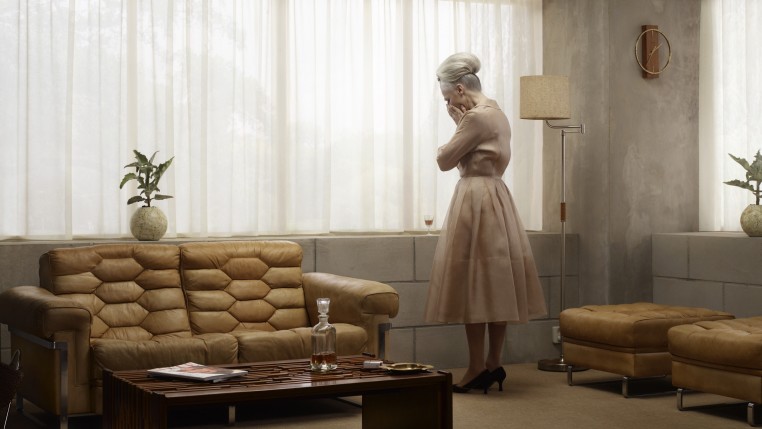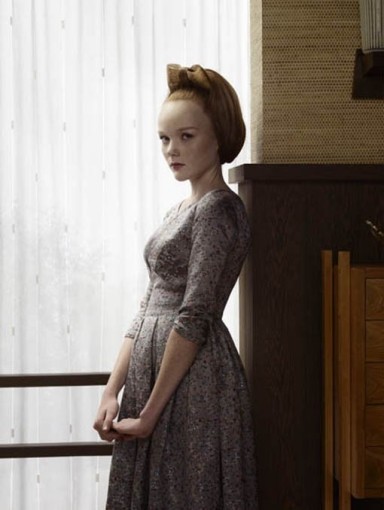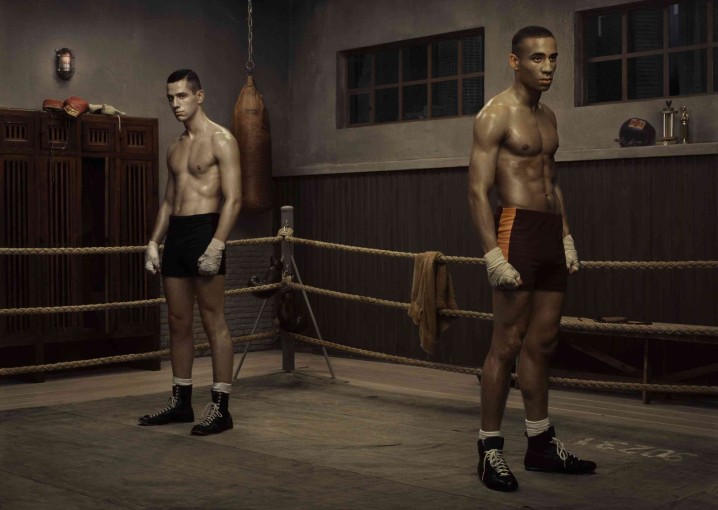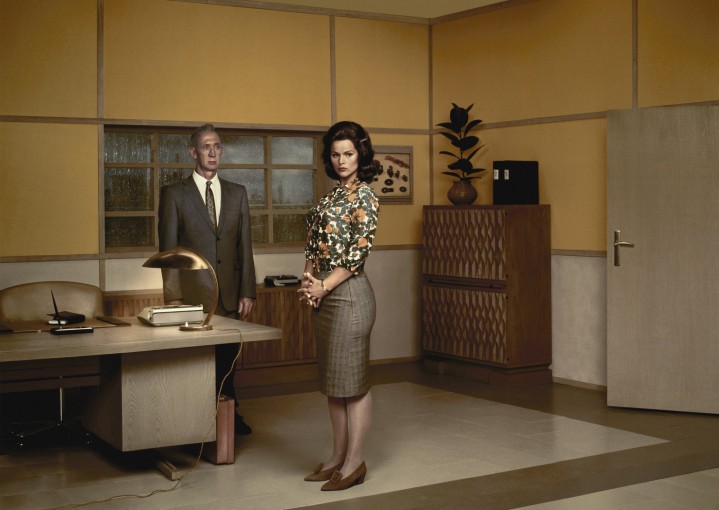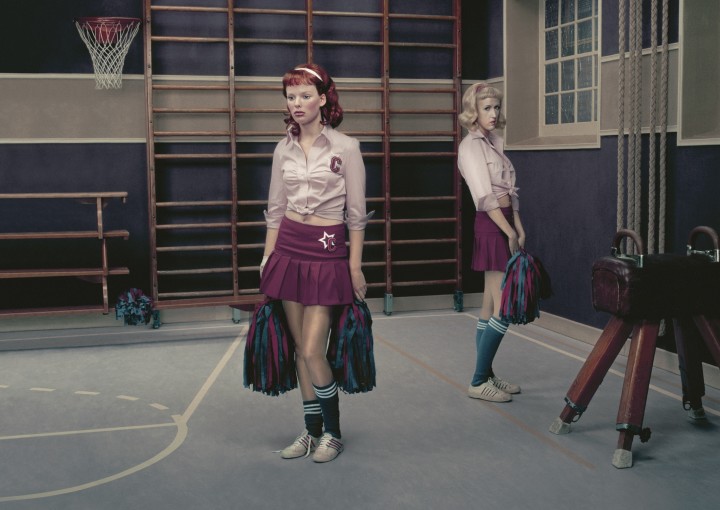This particular trilogy ‘Hope, Grief, Rain’ centres on the suspended moment when an emotional reaction begins. ‘Grief’ focuses on the silent battle between socially constructed notions of dignity and poise, whereas ‘Rain’ illustrates the notion of inaction of waiting for movement and the moment after happiness. Finally, ‘Hope’ captures a moment of expectation and longing, inviting the viewer to guess the subject’s thoughts.
"When I make a body of work I want to do two things, to explore the medium of photography (lighting, colour palette and so on) and to discover whatever is on my mind at the time. To explore who I am and how I feel.", Erwin Olaf.
Olaf’s highly theatrical mise-en-scenes recall the early ’60s, underscored by a diluted colour palette. He seeks inspiration from this period of major social changes, the rise of feminism, a prospering middle-class, globalisation and the haunting influence of television in nouveau-riche American households.
In the words of Taco Dibbits, the director of the Rijksmuseum, “[Olaf’s] work is deeply rooted in the visual traditions of Dutch art,” making Olaf “one of the most important photographers of the final quarter of the twentieth century.”















